This document provides guidance on starting an open source project. It outlines common pitfalls like underestimating resources and having an unclear vision. The key first steps are to learn from other projects, define goals and build a community. Successful projects have active management, coordination of tasks, and processes for decision making and releases. While many are volunteer efforts, large projects often rely on funding and paid contributors to coordinate activities. Managing volunteers is challenging and requires finding roles that motivate contributors.
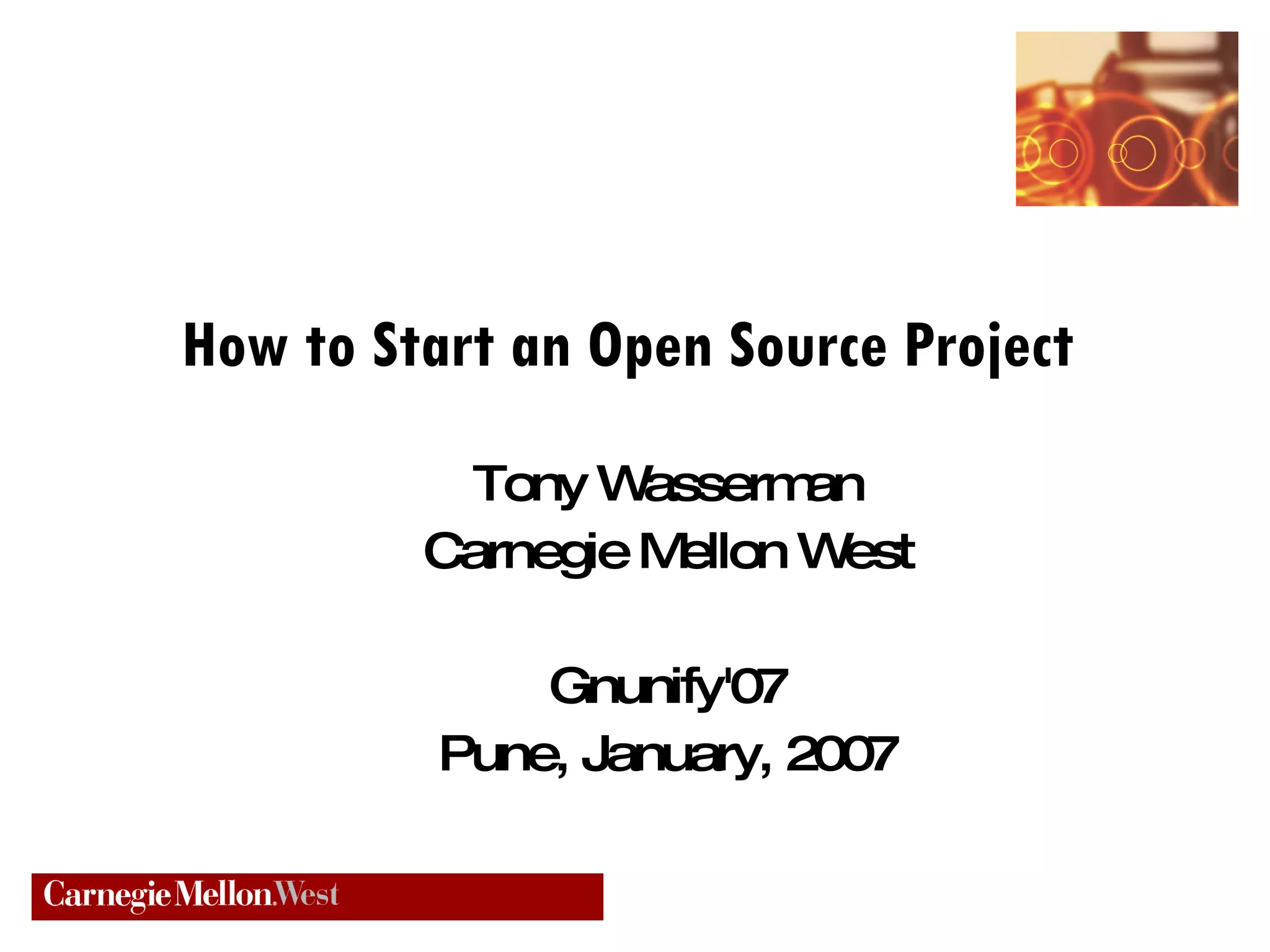
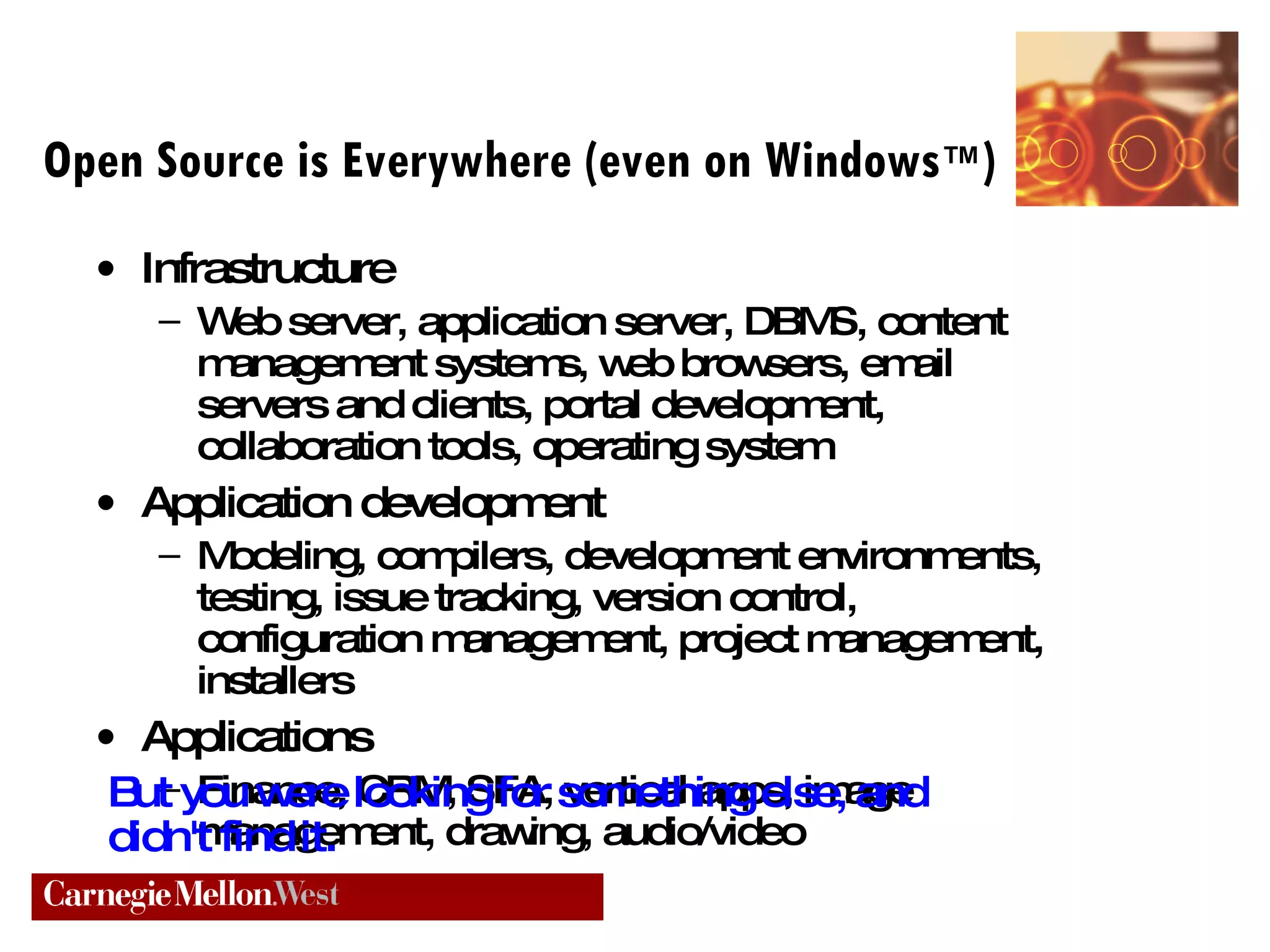
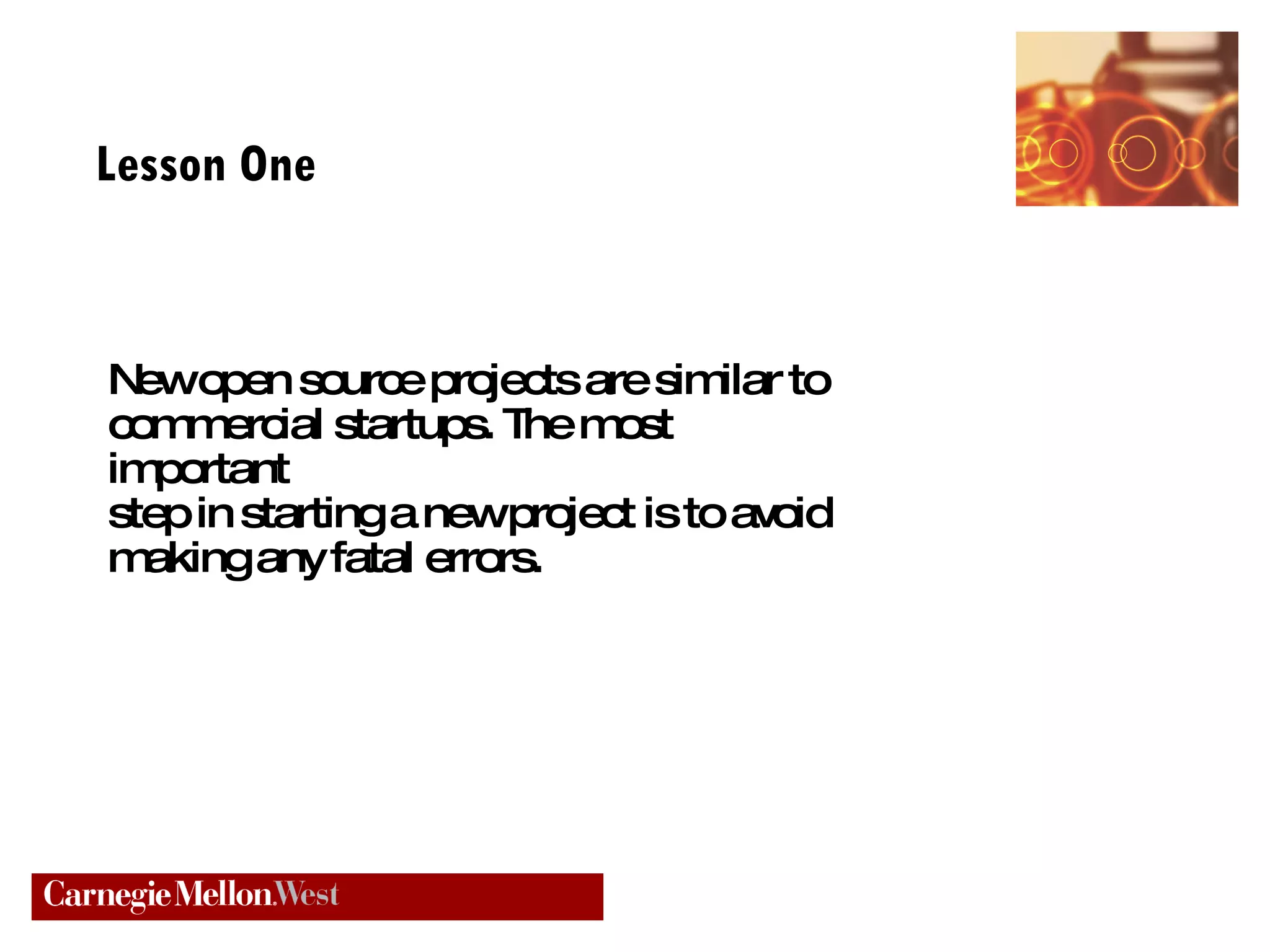
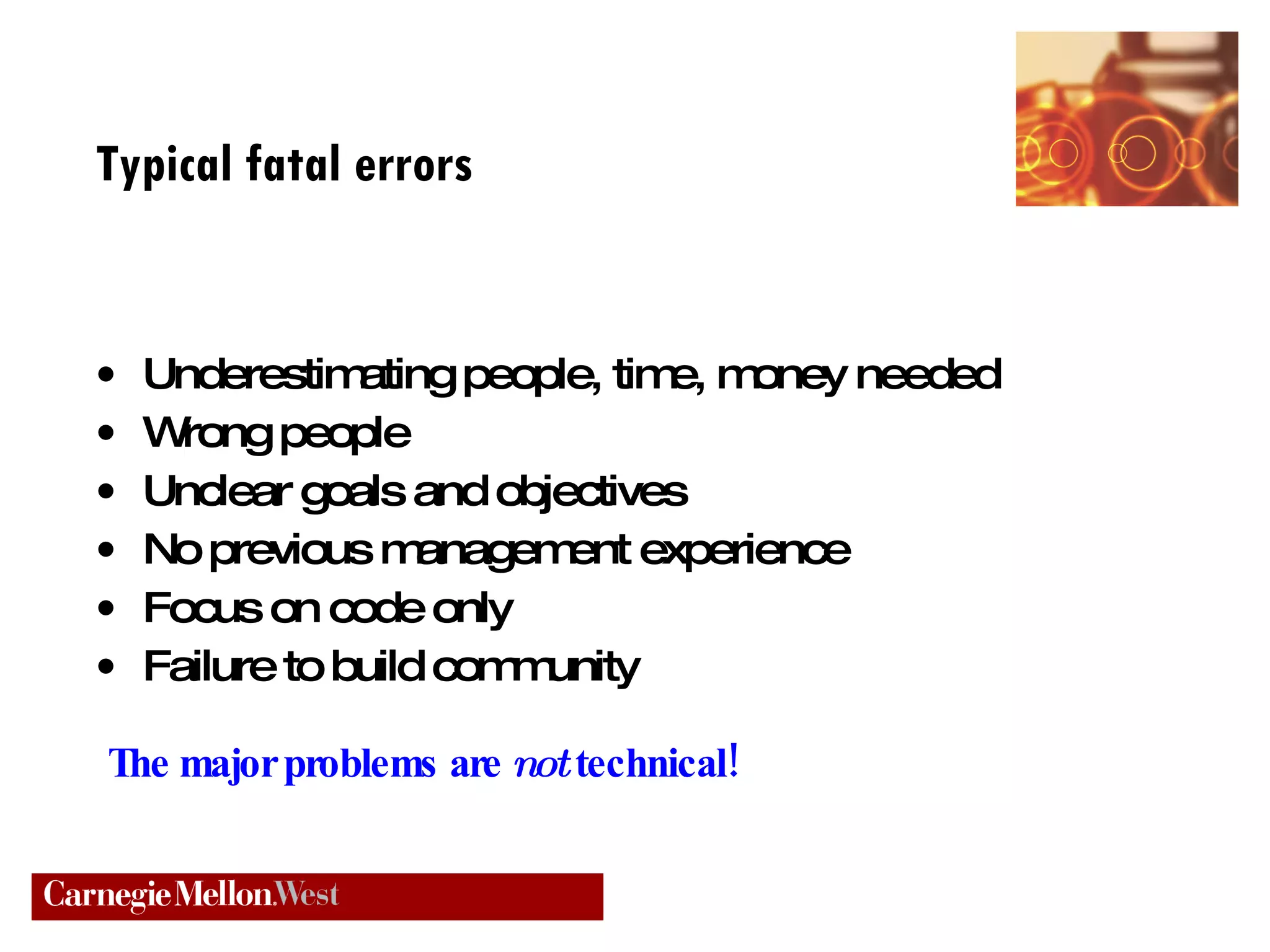
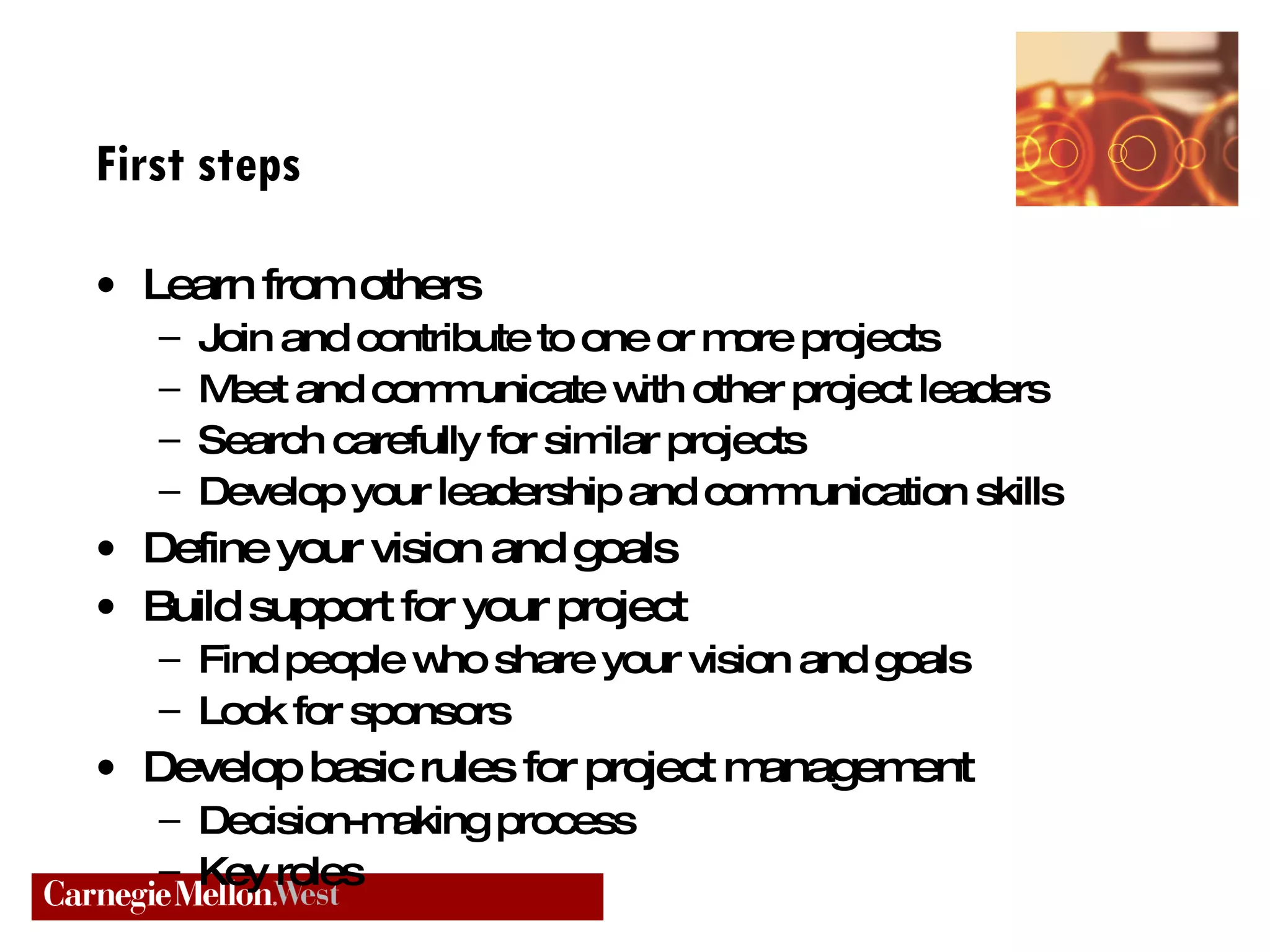
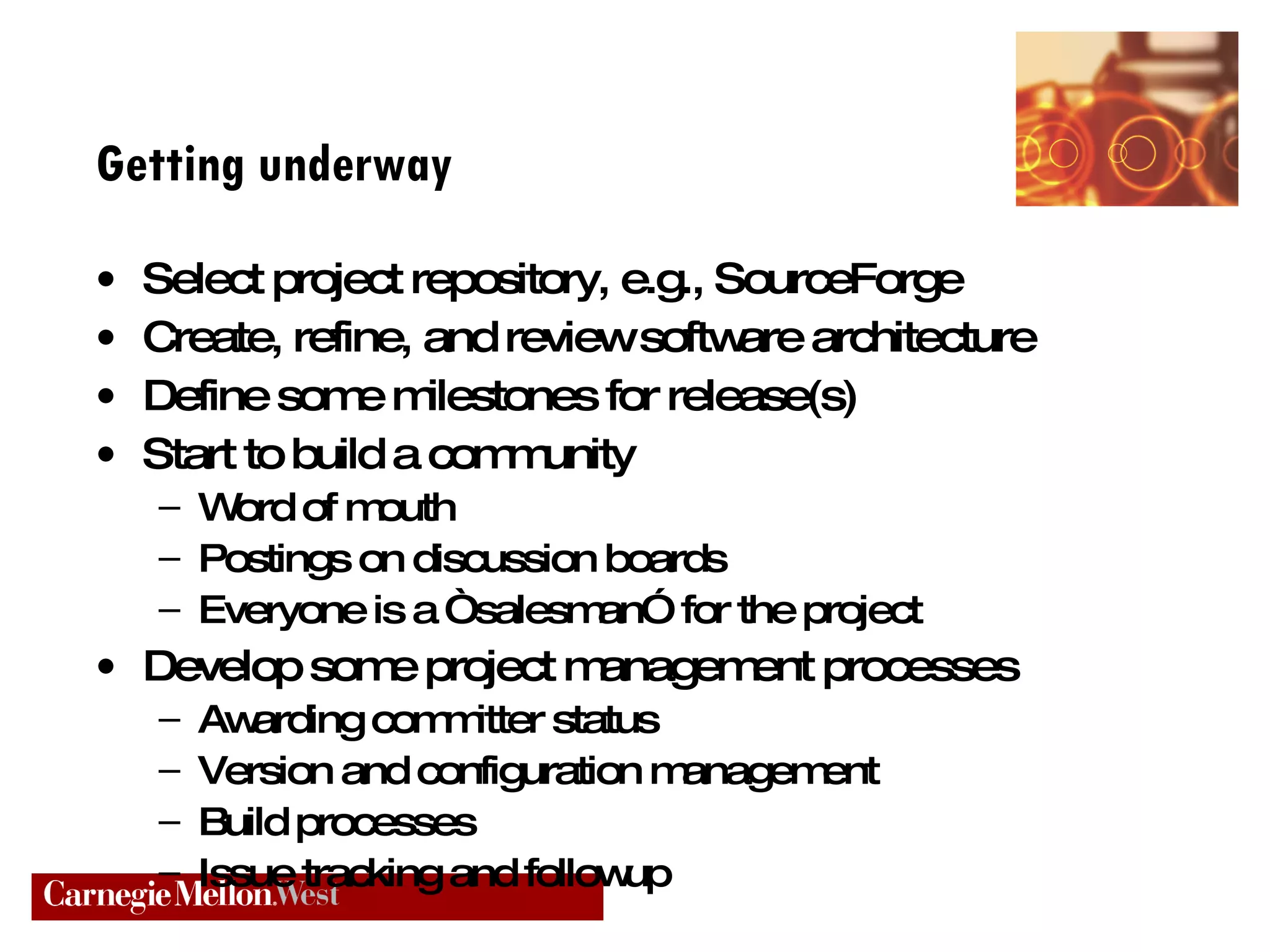
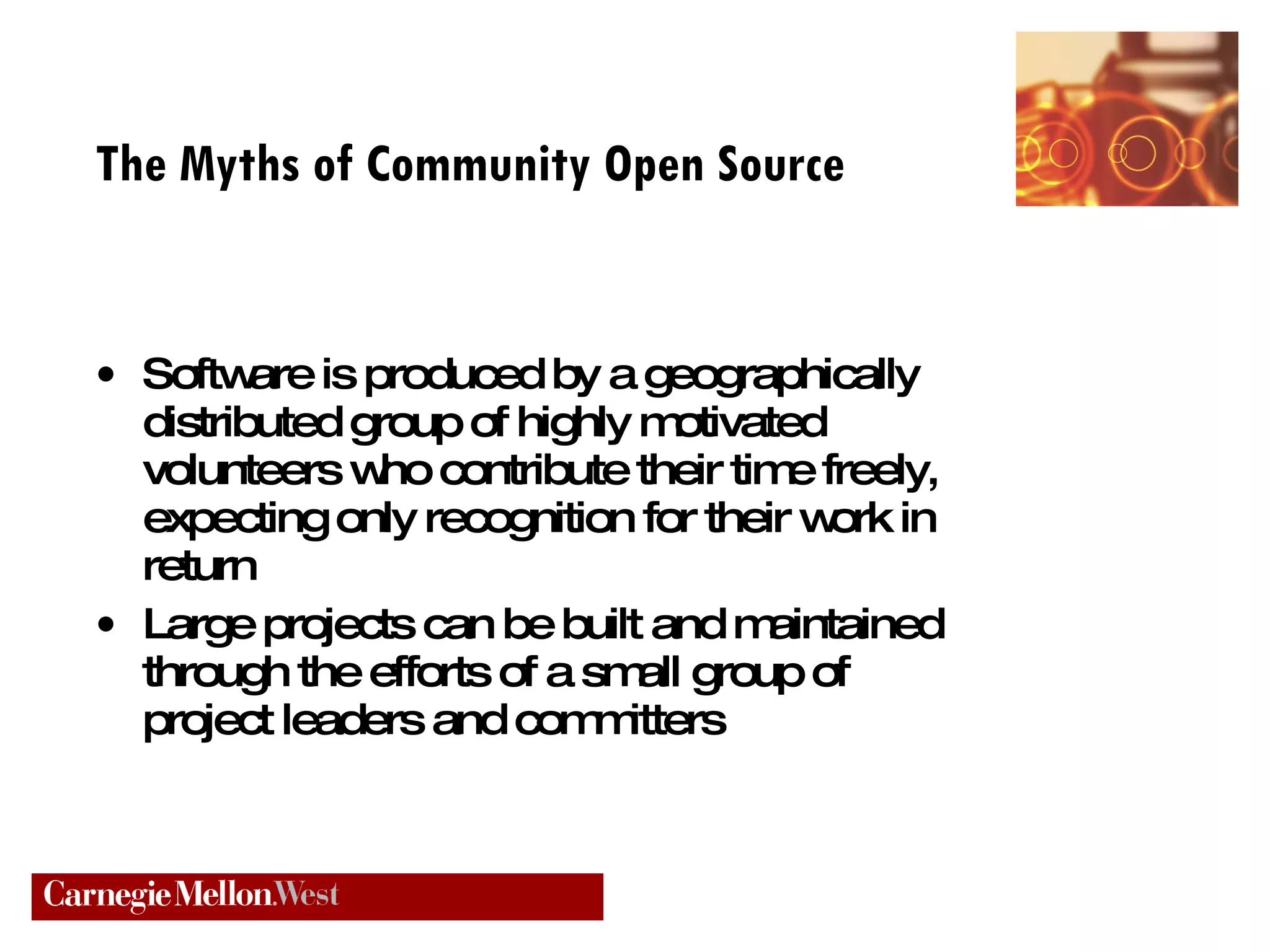
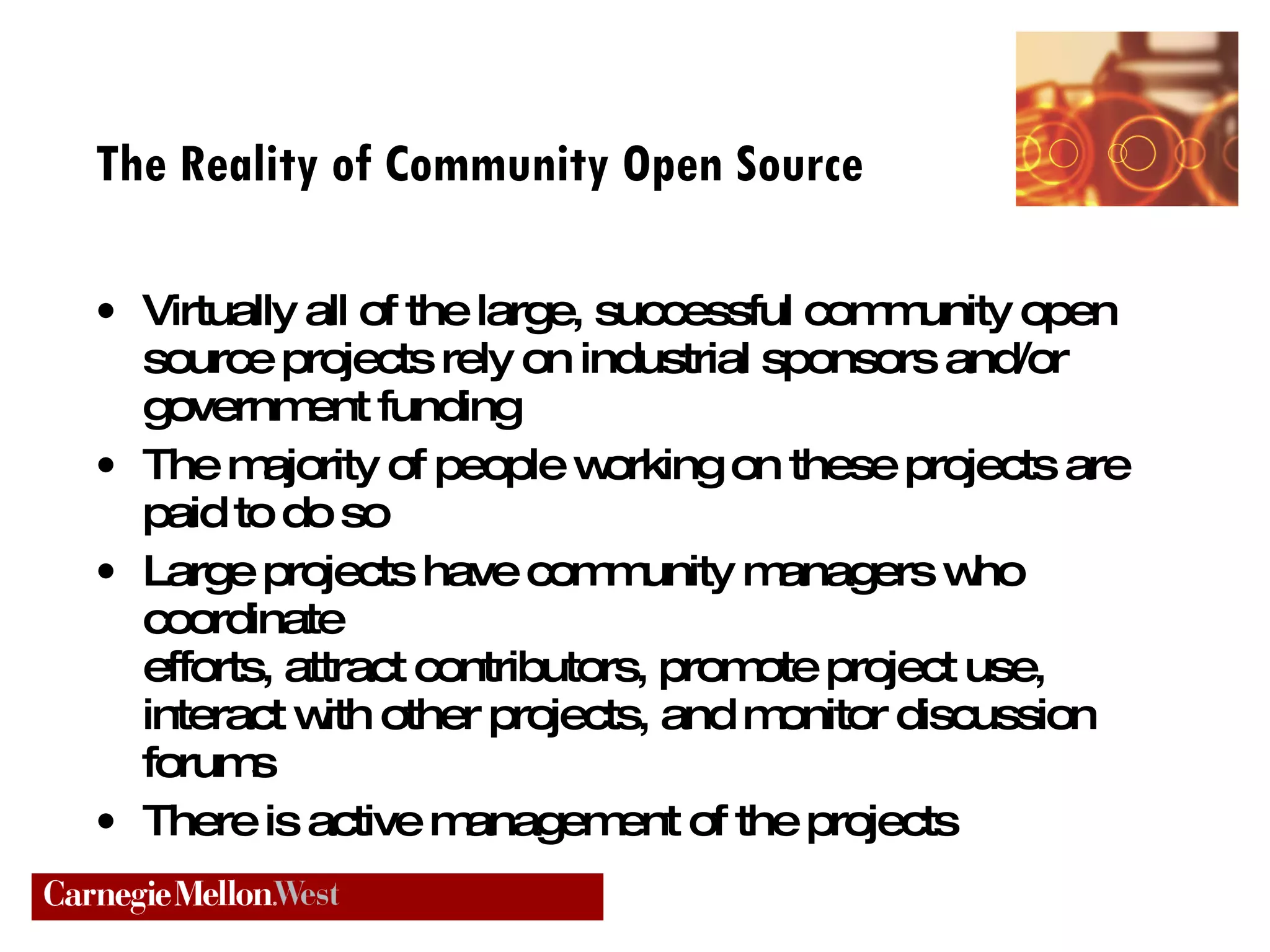
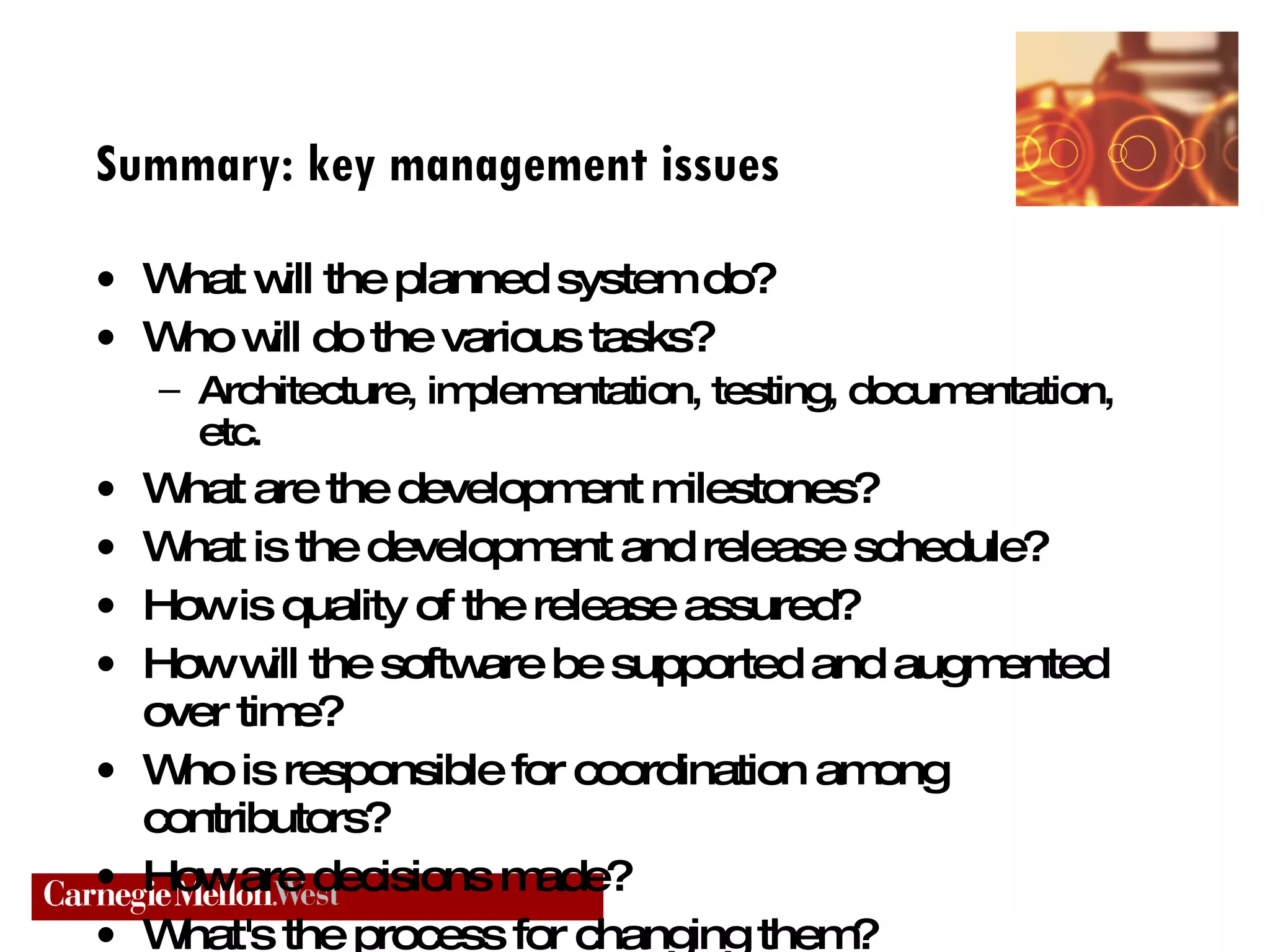
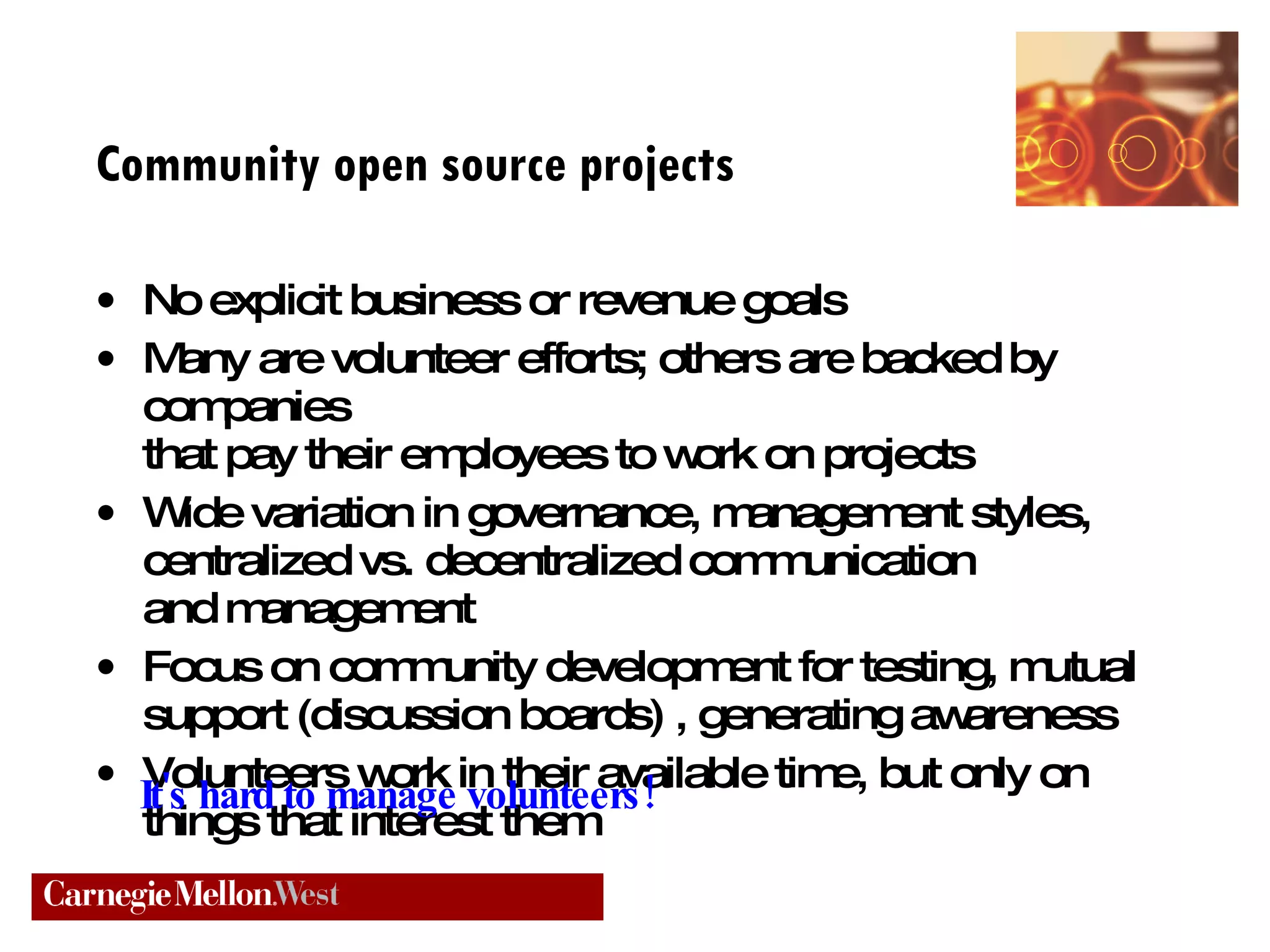
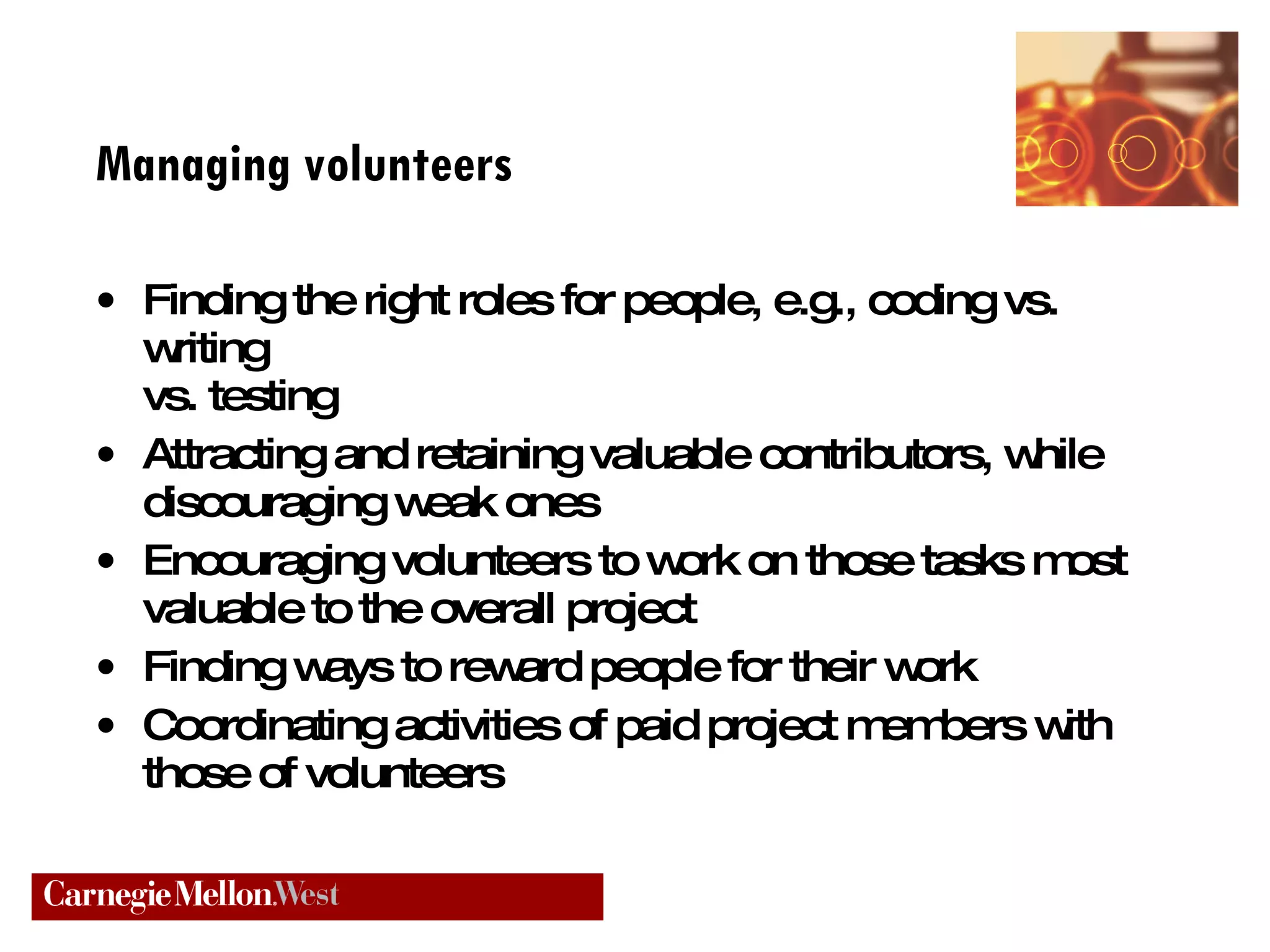
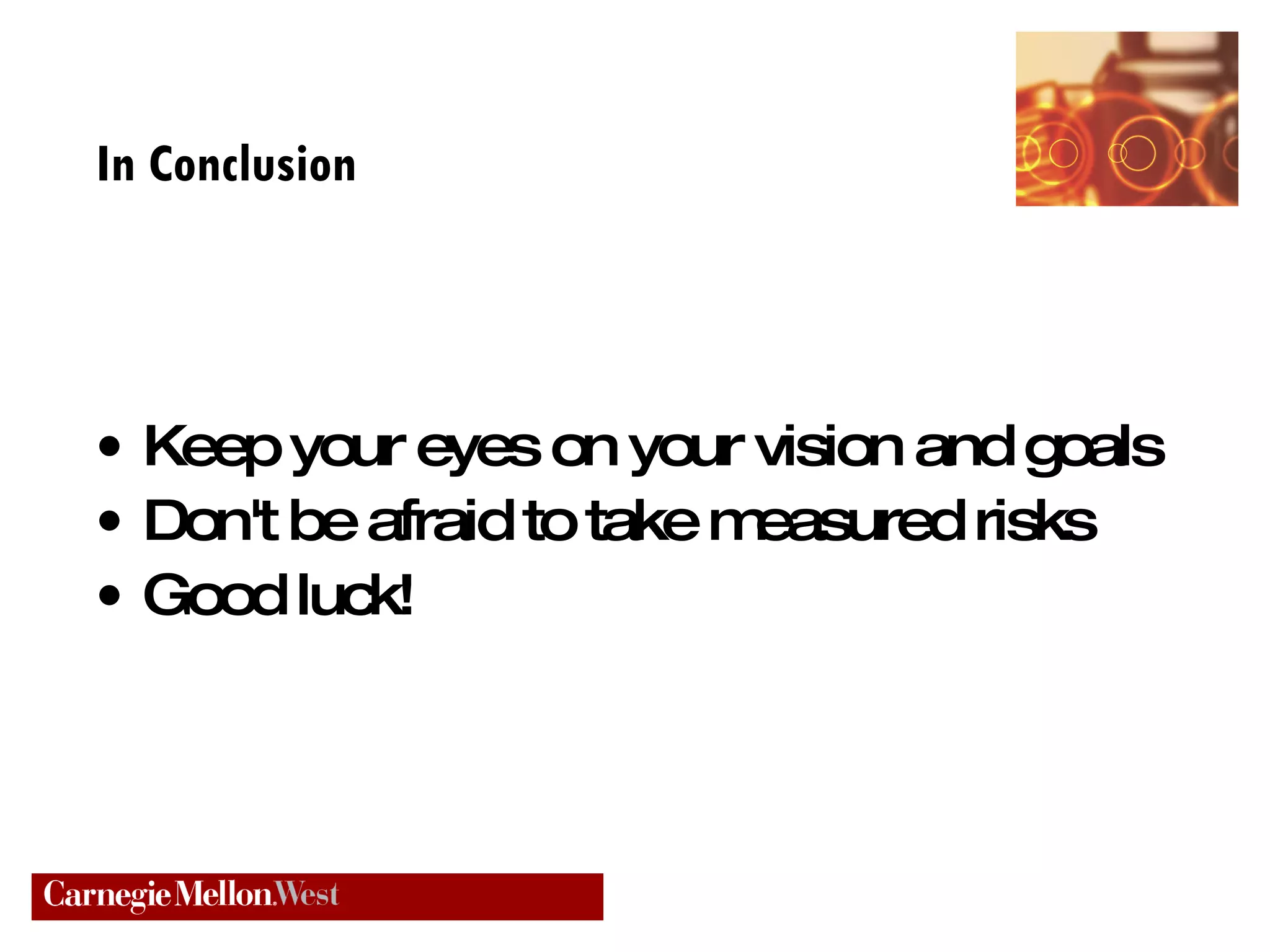
![Contact information Anthony I. (Tony) Wasserman post: Carnegie Mellon West Moffett Field, CA 94035 USA tel: +1.415.641.1180 (ofc) +1.415.612.0600 (m) email: [email_address] Skype: tony.wasserman AIM, YIM: twasserman Googletalk: tony.wasserman](https://image.slidesharecdn.com/how-to-start-an-open-source-project-257/75/How-to-start-an-Open-Source-Project-13-2048.jpg)